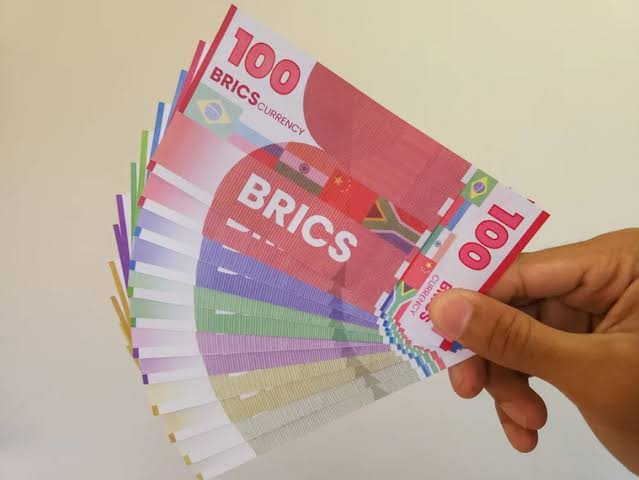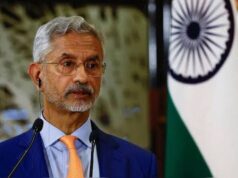BRICS currency still far off but dollar will be in doldrums

Luiz Inacio Lula da Silva Brazil’s President called on Wednesday for the BRICS nations to “create a common currency” for trade and investment between each other, as a means of reducing their vulnerability to dollar exchange rate fluctuations. Luiz made the proposal at a meeting in Johannesburg.
Experts have pointed out the difficulties involved in such a project, given the economic and political disparities between Brazil, Russia, India, China and South Africa and especially between China and India.
Till recently US dollar was being used by most countries for all international trades because they had no alternative to use any other means.
Brazil’s president therefore rightly believes that nations that don’t use the dollar as their national currency should not be forced to trade in US dollars, and he has also advocated for a common currency in the Mercosur bloc of South American countries.
As per him BRICS currency “increases our payment options and reduces our vulnerabilities,” he told the opening plenary session.Yes, this vulnerability was clearly seen and felt by India, especially after the attempted but miserably failed unilateral sanctions of a few G7 countries and their close lackeys in 1998 post Indian nuclear weapons tests.
So slowly but surely India began using the INR to settle trade with South Asian countries (members of the South Asian Association for Regional Cooperation—SAARC).
In 2012, the SAARC Currency Swap Facility was launched for all eight members. After 2014 when India’s growth engine started moving, it started taking steps for totally eliminating this vulnerability.
By 2023 India doubled its efforts to promote the use of its currency—the INR—in cross-border payments. An Asian Clearing Union including Iran and Myanmar got scheduled to facilitate INR settlements.
Next a breakthrough was achieved when India and UAE signed their FREE TRADE AGREEMENT on 15 Jul 2923, involving bilateral trade of INR 711000Crores ( Dhirham 30000 crores or USD 83.65 billion in2023-24), the payments involved was decided to be made in national currencies.
Now to trade in oil etc, India has permitted 22 countries including Russia and Iran to open so-called Special Vostro Rupee Accounts (SVRCs) with banks in India to carry out receipt and payment transactions vis-à-vis Indian entities for their business and individual clients in their home countries.
However as on date India’ share of international trade is quite small —only 1.8 percent and so ripples may not be felt for some more time. Though for UK and EU too in case FTA is signed, they may have to accept trade settlements in bilateral currencies.
Now coming to BRICS Currency all BRICS member countries have China as their main trading partner with lesser trade volume with each other. So China may wish for RMB as the BRICS Currency but it may not be acceptable to India.
China has not commented on the idea. President Xi Jinping spoke at the summit of only promoting “the reform of the international financial and monetary system”.In July, India’s foreign minister said, “there is no idea of a BRICS currency”.
Its foreign secretary said before departing for the Johannesburg summit that only boosting of trade “in national currencies” would be discussed. Russian President Vladimir Putin said the gathering, (which he attended via videolink, ) would only discuss trade payments between member countries away from the dollar to national currencies.
South African officials said a BRICS currency was just “not on the agenda” for the summit.Building a BRICS currency would certainly be a “political project”, to start with as per South African central bank governor Lesetja Kganyago.
“If you want it, you’ll have to get a banking union, you’ll have to get a fiscal union, you’ve got to get macroeconomic convergence,” Kganyago said.“Importantly, you need a disciplining mechanism for the countries that fall out of line with it… Plus they will need a common central bank… where does it get located?”
Trade imbalances are also a problem, Herbert Poenisch, wrote a senior fellow at Zhejiang University.
Thus BRICS leaders have certainly clarified that they want to use their national currencies more instead of the dollar, which strengthened sharply last year as the Federal Reserve raised interest rates when Russia – Ukraine commenced, making dollar debt and many imports more expensive.
Western unilateral Sanctions forced Russia to self exile from global financial systems last year It also set in motion many of non-western countries like India to start dealing with Russia in national currencies.
“The objective, irreversible process of of our economic ties is gaining momentum,” Putin told the summit on Tuesday.
The USD share of official FX reserves fell to a 20-year low of 58% in the final quarter of 2022, and 47% when adjusted for exchange rate changes, according to International Monetary Fund data.
However, the dollar still dominates global trade. It is on one side of almost 90% of global forex transactions, according to Bank of International Settlements Data.
De-dollarising would need countless exporters and importers, as well as borrowers, lenders and currency traders across the world, to independently decide to use other currencies.
So there will be no immediate de dollarization, the impact of trade bilateral currencies will be felt once India becomes the Number three Economy even in USD dollar terms.






